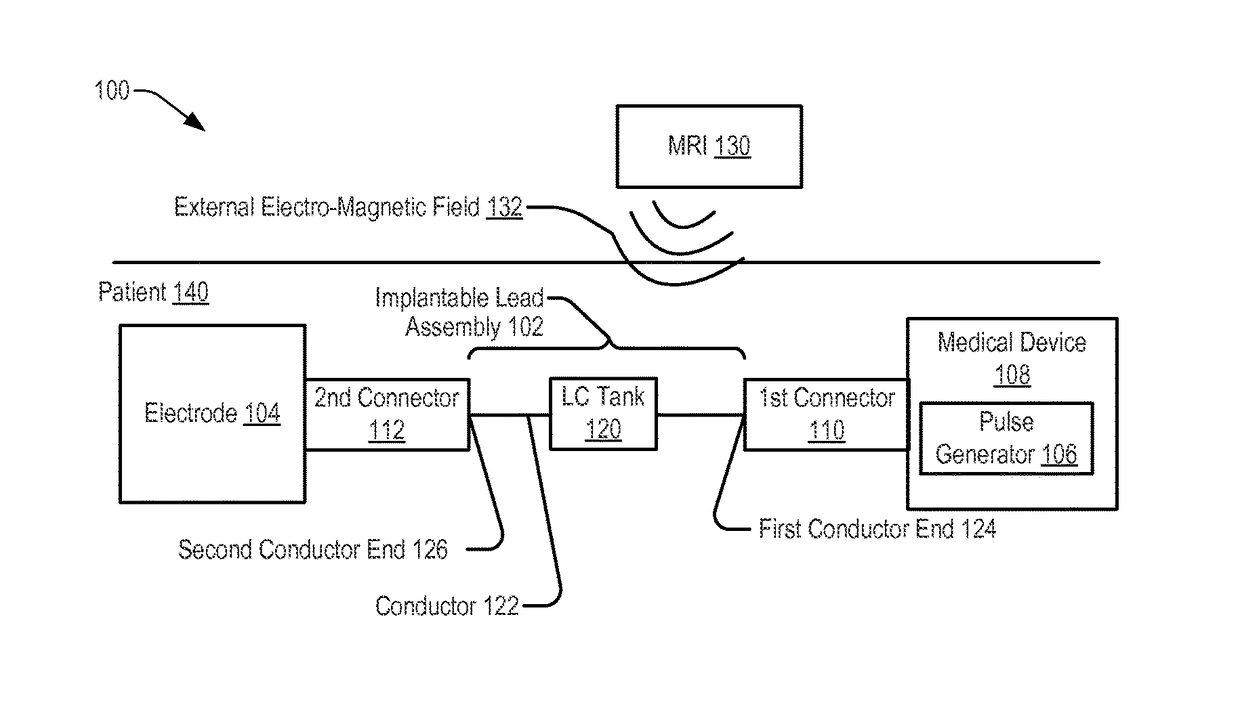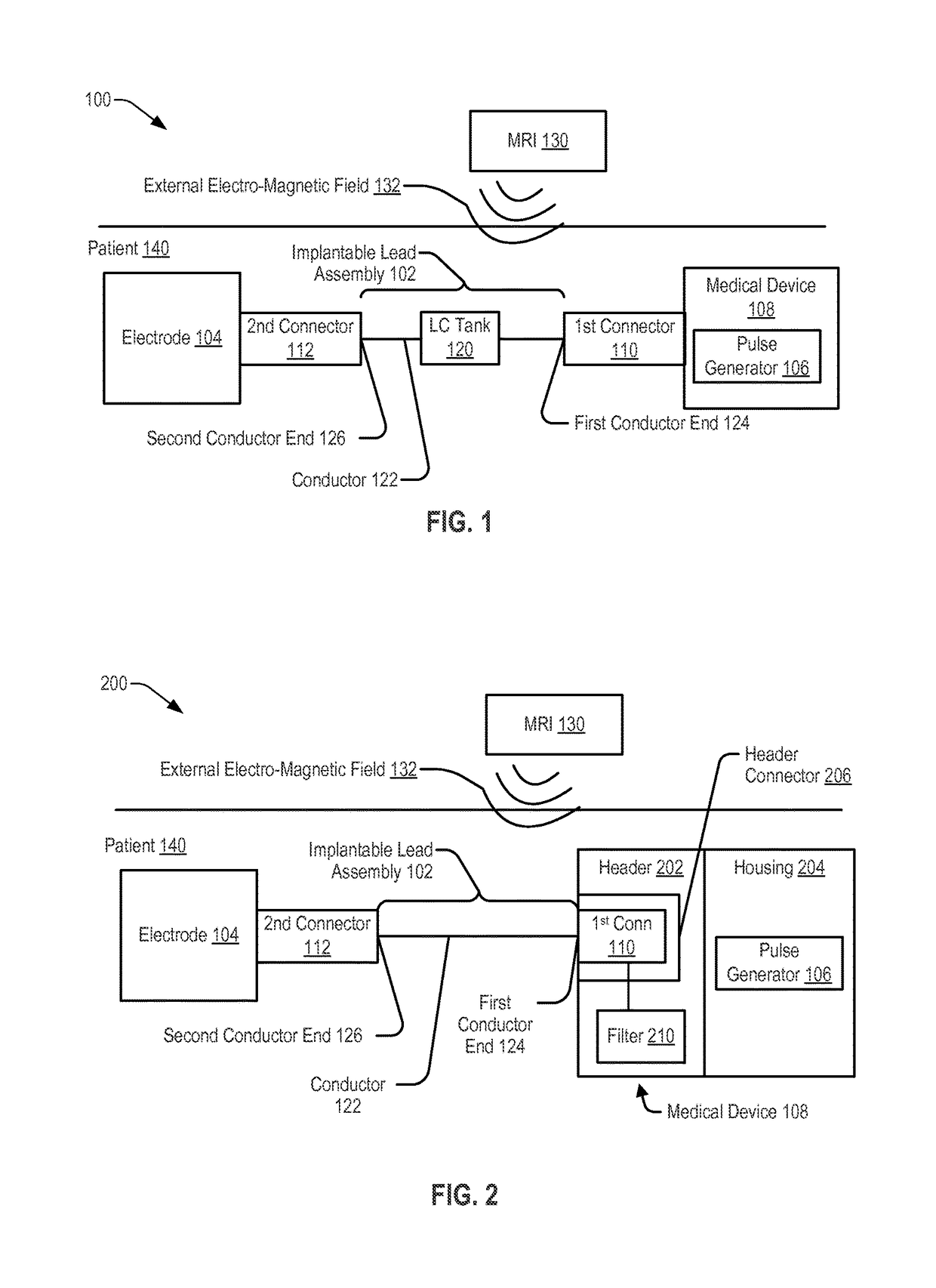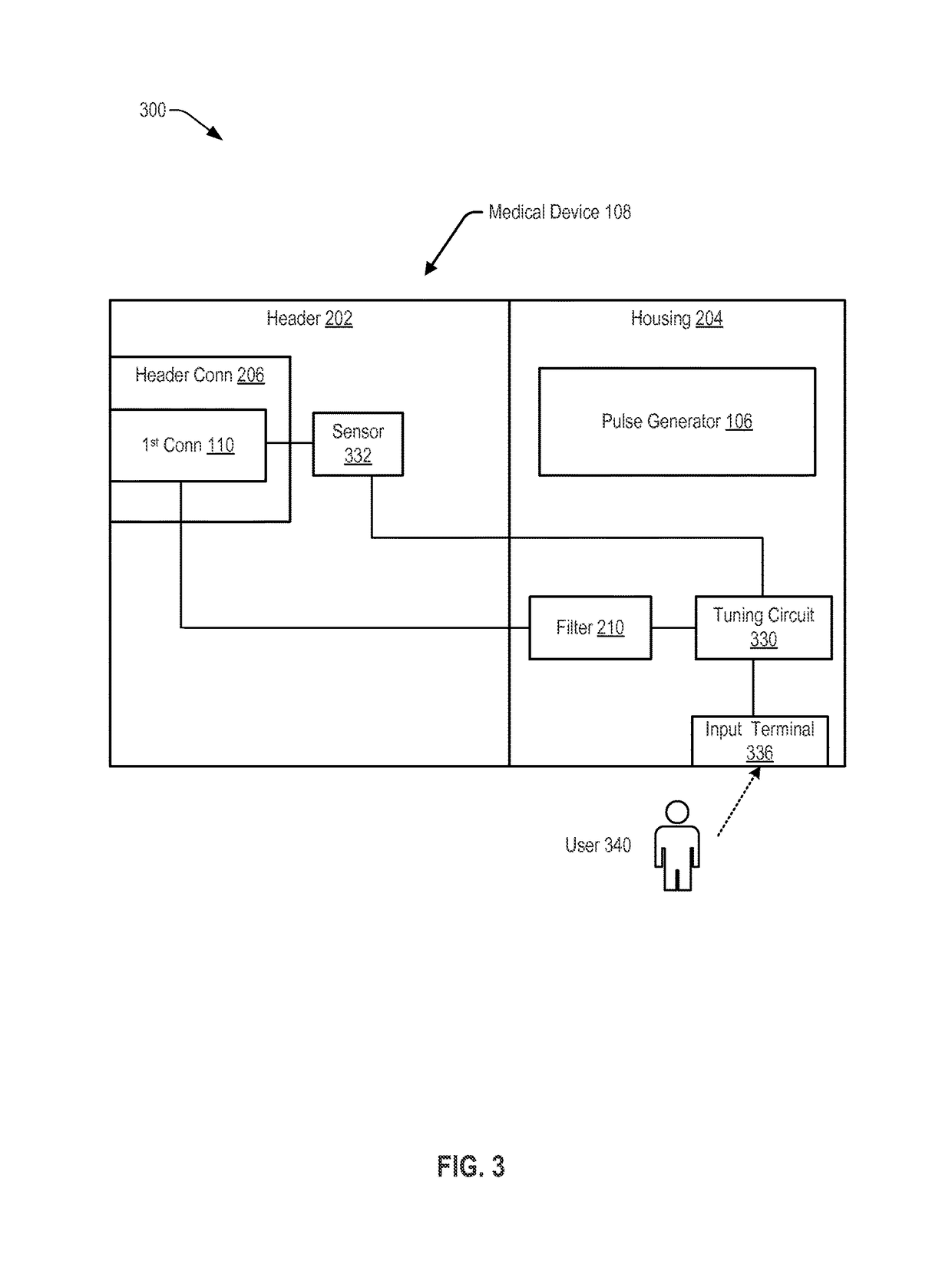MRI-safe implantable lead assembly
a lead assembly and implantable technology, applied in the field of mri-safe implantable lead assemblies, can solve the problems of inducing electric current in parts of the system, dangerous current induced in the implantable lead assemblies by an electro-magnetic field of an mri procedure, and causing damage or discomfort, so as to mitigate the effects of current, dissipate induced current, and reduce curren
- Summary
- Abstract
- Description
- Claims
- Application Information
AI Technical Summary
Benefits of technology
Problems solved by technology
Method used
Image
Examples
Embodiment Construction
[0036]Referring to FIG. 1, a system 100 including an implantable lead assembly 102 is shown. The implantable lead assembly 102 may be coupled, via a first connector 110, to a medical device 108 and may be coupled, via a second connector 112, to an electrode 104. The implantable lead assembly 102 may include a conductor 122 extending from a first conductor end 124 to a second conductor end 126. The first conductor end 124 may be coupled, via the first connector 110, to the pulse generator 106. The second conductor end 126 may be coupled, via the second connector 112, to the electrode 104.
[0037]In a particular embodiment, the system 100, or a portion thereof, may be implanted within tissue of a patient 140 to provide therapy or to sense information from the tissue of the patient 140. For example, the electrode 104 may be configured to sense information related to tissue of a patient 140 (e.g., electrical signals generated by a nerve of the patient 140) and to provide the information t...
PUM
 Login to View More
Login to View More Abstract
Description
Claims
Application Information
 Login to View More
Login to View More - R&D
- Intellectual Property
- Life Sciences
- Materials
- Tech Scout
- Unparalleled Data Quality
- Higher Quality Content
- 60% Fewer Hallucinations
Browse by: Latest US Patents, China's latest patents, Technical Efficacy Thesaurus, Application Domain, Technology Topic, Popular Technical Reports.
© 2025 PatSnap. All rights reserved.Legal|Privacy policy|Modern Slavery Act Transparency Statement|Sitemap|About US| Contact US: help@patsnap.com



